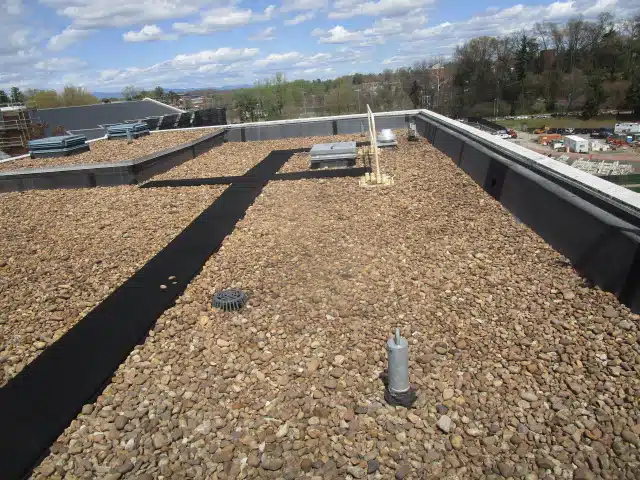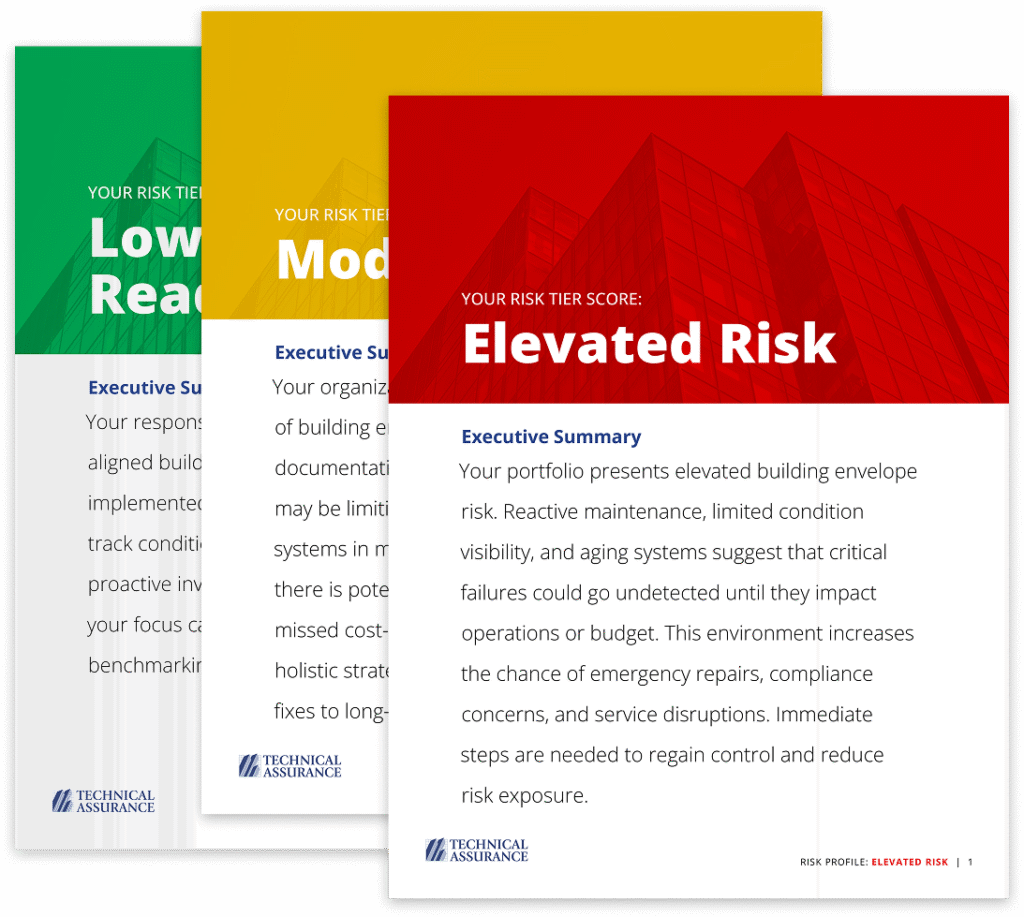Home » Services » Commercial Roof Consulting » Rooftop Fall Protection Hazard Assessment
Rooftop Fall Protection Hazard Assessment
Take a Comprehensive Approach to Fall Protection
Falls from heights and working surfaces are among the leading causes of serious work-related injuries and deaths. Fall protection safeguards employees and company assets from preventable accidents. As part of our roof consulting services, the Technical Assurance team can perform routine rooftop fall protection hazard assessments to help keep your facilities OSHA compliant and maintain safe rooftop working environments. Our two-pronged approach includes both roof condition and fall protection hazard assessments in order to provide a comprehensive understanding of the entire roof system for clients – from both life safety and serviceability standpoints.

Why Are Rooftop Fall Protection Hazard Assessments Necessary?
Stay Compliant
Maintain Standards
Life Safety
Legally Protect Company Assets
Our Approach to Fall Protection Hazard Assessments
Time and Cost Efficiencies
- OSHA requires that the fall protection system components be assessed on an annual basis, which means a qualified professional is already spending time on the roof on a regular, annual basis. Incorporating an assessment, regular maintenance and/or preventative maintenance into this same visit by the same qualified professional creates operational efficiencies that impact the condition, lifecycle performance and life safety of the roof system, ultimately lowering the assessment costs for the building owner.
- The roof condition assessment may reveal defects or other roof related issues that require repair and/or replacement, which can be performed in tandem with any fall protection hazard remediation efforts.
- Within a roof asset management program, the fall protection data is stored within the same centralized ON-PNT® database with the other building system data. This allows the fall protection systems to be included in the annual capital and/or O&M planning and budgeting processes.
Roofing Best Practices
- Focus on good roofing practices when considering fall protection for proper integration of the systems. The performance of the roof can become compromised if it is not considered when dealing with the remediation or installation of fall protection systems.
- The age and condition of a roof system could impact the fall protection system remediation recommendations.
- The access and use of rooftop equipment could negatively impact both the roof and fall protection systems. When equipment maintenance is required, coordination in heavily trafficked areas is necessary in order to minimize damage.
The Role of Fall Hazard Assessments
- Identify fall hazards (in immediate and surrounding areas).
- Access – Ladder ascent/descent
- Perimeter Edges – Unprotected leading edges
- Equipment Access – HVAC and air handling systems, solar panels
- Openings – Roof hatches, skylights, and access ladder openings
- Navigation – Parapet walls, pipe racks, pitched roofs
- Inventory existing fall protection systems and equipment
- Assign risk values to hazards and prioritize accordingly.
- Propose solutions.
Our Process
Inventory and Hazard Assessment
Documentation
Reporting
Post Report Meeting
Final Report
Collect Assessment Data in One Centralized Location
Types of Fall Protection Solutions
Passive Restraints
A passive restraint system is perhaps the most basic form of fall protection. Passive restraint fall protection systems create barriers that prevent workers from reaching hazardous areas where falls might occur. Examples of passive restraint solutions include:
- Warning line systems
- Guardrails
Active Restraints
Active fall protection systems require action on the part of the user and are intended to stop workers before they fall by controlling range of motion. These include:
- Harnesses
- Safety lanyards
Our Approach
Hazards surrounding the following active and passive restraints identified during our assessment include, but are not limited to:
- Ballasted and Permanently
- Mounted Railing
- Skylight or Opening Screen/Cover
- Exterior and Interior Mounted Ladder
- Stairs
- Crossover Platform
- Ladder Port or Dock
- Ladder Climbing Safety System
- Horizontal Lifeline
- Cable System
- Roof and/or Wall Anchors
- Davits

